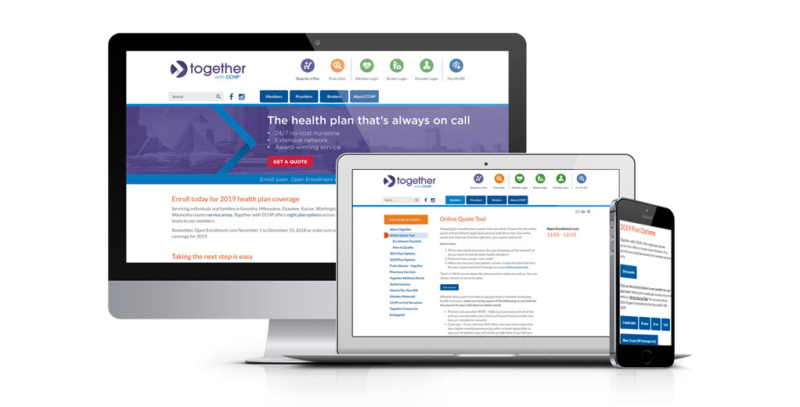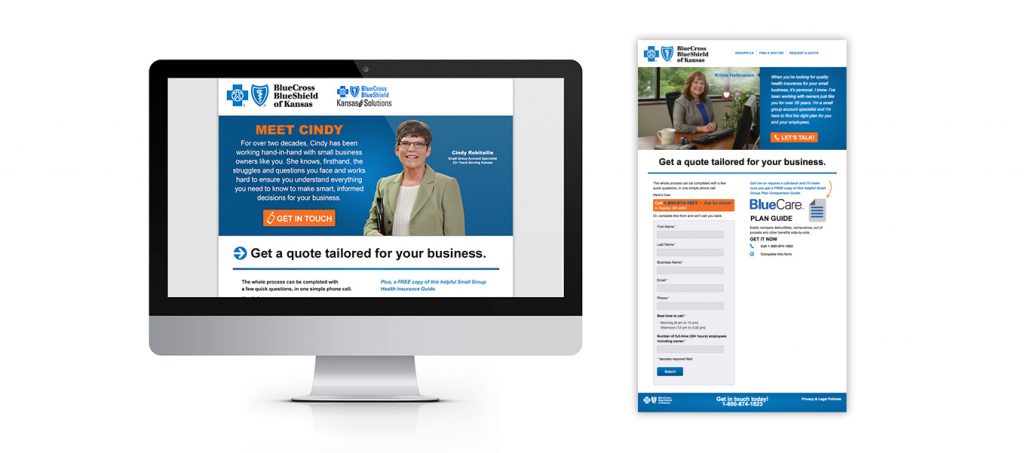In recent years we’ve seen a rapid shift towards value-based healthcare. As patients and consumers demand better patient outcomes, cost efficiency and more personalized health care experiences, marketers must adapt to deliver on these expectations.
Savvy health insurance and pharmaceutical marketers are turning to sophisticated digital targeting methods to reach their audiences in more personalized and highly-effective ways. Let’s take a closer look at what they’re doing (and not doing) to navigate this new reality and get maximum results.
1
DO Use Data to Identify the Right Audience Segments and Drive Consumer Insights
Everything you do, from audience segmentation to customer journey mapping, campaign execution and optimization, should be grounded in high-quality data. This is how your brand will create the personalized experiences your audiences are craving.
Start by gathering your customer/prospect data, as well as data from internal campaigns, social media and other sources. While there are countless ways to sort your data, geography, basic demographics and past behaviors are a good place to start. Once you know who your targets are, figure out what they need. What are their desires and expectations? What disease or health condition, procedure or product matters to them, and how does this impact their life? How do they want to receive this information?

At Responsory, we typically start with a combination of client-supplied customer/prospect data (if available, but not required. Case in point: this campaign). We also employ a comprehensive Medical, Healthcare and Pharmaceutical data suite to help identify new prospects and the most viable audience segments. This multi-dimensional data suite overlays a combination of hospitals and medical offices, physicians and providers, prescription drug classes and distribution, and disease states and chronic indicators. These data points are ultimately mapped to IP-address “zones” (in a privacy-safe manner) and scored according to their likelihood to respond to a particular campaign.
2
DON’T Underestimate the Value of User Experience and Personalized Content
Identifying your target audience segments allows you to share more personalized and complex information with your target audiences, which in turn creates relevancy and drives response rates. You’ll want to develop messaging and creative that’s uniquely tailored to each segment. Consider tailoring everything from the featured product or service to benefit statements, calls to action, photography/imagery and other design elements by segment for best results.

Check out how creative and user experience enhancements made a significant impact for this ACA campaign.
3
DO Employ IP-Targeting to Reach Patients When It Matters
Historically, marketers have struggled to reach patients while in the point-of-care setting. It’s difficult and costly to produce physical displays, gain permissions from clinics and ensure you’re reaching the right people with the right message. Today’s marketers are instead turning to digital delivery such as IP-targeting for improved accuracy, reach and ROI. IP-targeting automatically optimizes digital campaigns using machine learning and serves ads to users based on their online behavior.

Here’s a real-life example: A top PCSK9 inhibitor brand is using Smart Zones IP-targeting to reach patients on their smartphones while they’re waiting at their cardiologist’s office. Patients who log into the clinic’s Wi-Fi network (and opt in for ads) are served display advertising that encourages them to have a conversation about the particular drug with their doctor. It’s the ultimate example of relevant messaging being served to a relevant audience at a relevant time and place.
4
DON’T Rely on Technology as the End All Be All
While technology is the driving force behind all digital marketing campaigns, it’s not enough on its own. In the example above, Smart Zones technology provides powerful targeting capabilities and delivery of digital ads at the right place and the right time. But technology is only as good as the strategy behind it. We cannot stress enough the value of a data-based segmentation strategy, smart creative and thorough tracking and measurement.

Tip: Combine your digital targeting efforts with other tactics for even greater results potential. See how well Smart Zones digital advertising performed as part of a multichannel campaign effort for a top health plan.
5
DO Test and Optimize Before and During Your Campaign
The beauty of digital advertising lies in the ability to optimize in real-time. Take advantage of this by testing your targeting strategy, messaging and creative before and during your campaign. Then adjust based on performance.
At Responsory, for example, every Smart Zones campaign includes rigorous testing and data collection to identify optimal audience targets, delivery windows, message frequency and creative/messaging for each segment. A significant portion of this happens before any ads are served and continues throughout the course of the campaign for maximum results.
Go Deeper with Your Audience Visibility and Reach
In today’s world where in-person interactions are becoming increasingly limited, a smart digital targeting strategy will always be a DO. So what will it cost to put your message and offer at the fingertips of your exact target audiences? Try the Smart Zones calculator to find out now.




